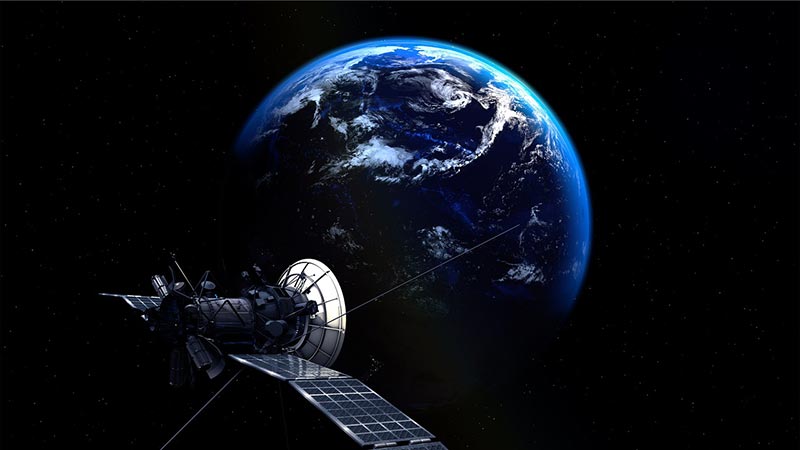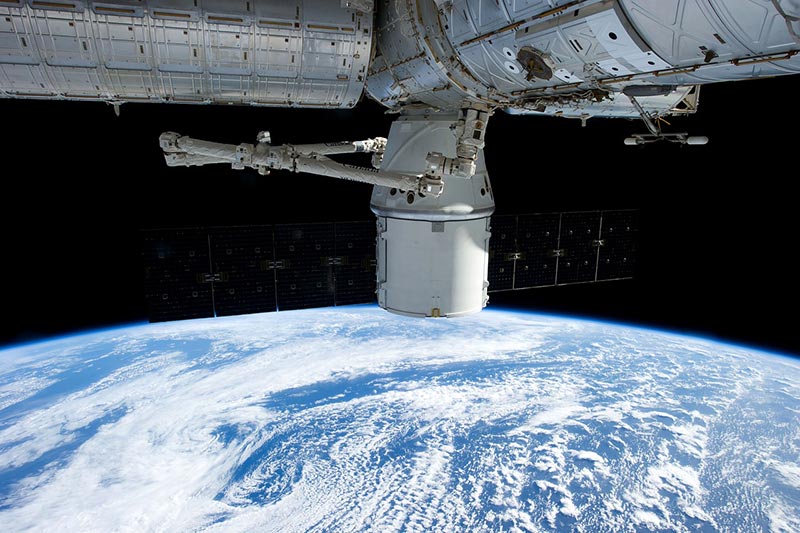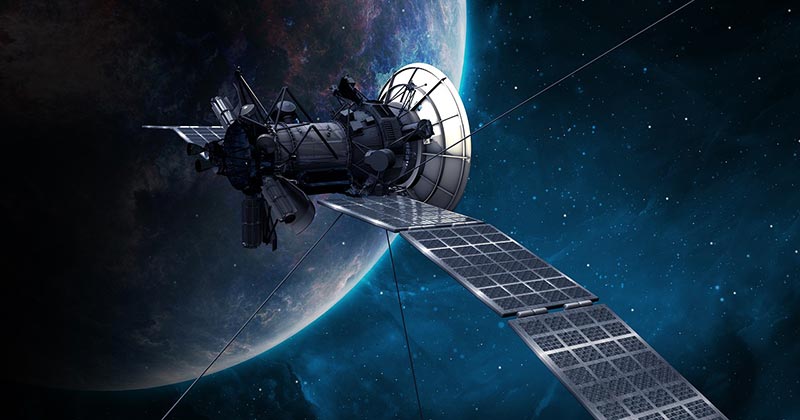How Big Is a Satellite? The Surprising Answer!
Last Updated on

It’s no news that very few people have been fortunate enough to travel to space. And those of us who haven’t, we’ve often found ourselves wondering what it’s like to see our blue marble from up there.
How big does it look in comparison to other planets? And more importantly, what are all those bodies that we keep on seeing from the surface, just floating around?
The questions don’t end there, as you’ll get to learn that various countries have over the years launched satellites into space. These gadgets are meant to help humans predict the weather, communicate and fortify defenses.
So once again, you find yourself asking what satellites are, and how big they are. Read on for the surprising answer.

What Is a Satellite?
A satellite is a body that revolves around another body in our solar system. Therefore, seeing as the Earth revolves around the sun, you’ll be right to assume our planet is the star’s satellite. Correspondingly, the moon is our satellite because it follows an elliptical path while moving around the earth.
But those two are perfect examples of natural satellites. If you travel to space, you’ll come across satellites that look a lot like the equipment that belongs in an industrial plant. Those bodies are man-made, thus called artificial satellites.

How Big Are Natural Satellites?
Let’s first look at the natural satellites that orbit our sun. Earth has a diameter of 7,917.6 miles, but it’s not the smallest planet. That slot goes to Mercury, with a diameter of 3,031.9 miles. The largest planet is Jupiter, with a diameter of 86,881 miles.
Then we have the moons, also referred to as planetary satellites. Deimos is the smallest moon in our system, as it only has a diameter that’s 7 miles wide. The largest moon is Ganymede, with a diameter of 3,270 miles. That means it’s even larger than the smallest planet, Mercury.
How Big Are Artificial Satellites?
Their sizes usually vary, because during their production we always take into consideration a few factors. We have to think about their primary purposes, the altitude at which they’ll be installed, and the type. Is there a standard or universal size? No, there isn’t one.
Large Satellites
The largest satellites are normally installed at altitudes of 22,236 miles or more, and weigh over 4,000 pounds. If you’d like to see one in action, you’ll have to get to geosynchronous orbit (GEO).
The GEO is a type of orbit that’s earth-centered and allows our satellites to be in tune with the planet’s rotation. Once the satellites have been placed in that orbit, it becomes easier to monitor communications and weather changes, in addition to taking part in surveillance.
Have you ever heard of the International Space Station? To date, that’s the largest satellite made by man. Its first components were launched in 1998, on the 20th day of November. It’s 361 feet wide, 243 feet long, and weighs 925,000 pounds.

Medium Satellites
Anything that weighs between 1,100 to 2,200 lbs falls in the medium satellite category. And believe us when we say that there are many medium-sized satellites currently orbiting our planet. The most common one is the Jason-3, which happens to be an American-European observatory satellite. It weighs 1,212 lbs and is a project that our scientists have been working on in collaboration with European scientists.
The other well-known medium-sized satellite is the SCISAT-1. It was built to collect sufficient data for atmospheric research and science.
Depending on its purpose, this satellite can be launched into our geosynchronous orbit, the medium-earth orbit, or the low-earth orbit.
Mini- and Micro-Satellites
The minis weigh between 220 to 1,100 lbs, while the micros fall in the 20-to-220-pound category. But their altitudes are similar in that they are usually launched to orbit at 110 to 1,240 miles. What’s more, they both revolve around our planet following the low earth orbit (LEO).
Nano-Satellites
These satellites are very small compared to their peers, as they only weigh 2 to 20 lbs. The good news is that their components are not as pricey as those used to build other satellites. Sadly though, that’s what makes them relatively less powerful. And the other reason why they can only be launched at low altitudes.
Small doesn’t always mean useless. They can be used to detect or monitor signals, for communication, or global positioning. However, the only way that they’ll be able to seamlessly collect and process data is by working in tandem with a “mother satellite.”
The data will be relayed to the mother satellite and then to the ground station on earth.

Picosatellites
If you thought 2 pounds was too light for a satellite, wait until you hear about the picosatellite. They are the smallest satellites and weigh less than 2 lbs. There are currently more than 6,500 picosatellites in low earth orbit, launched by various countries. And they are just as stable as their counterparts, by the way.
What’s a Launch Vehicle?
A launch vehicle is also called a carrier rocket, and it’s a launch system designed to carry whatever payload we’ve built, from our planet’s surface to outer space. The payload can be a spacecraft, rover, lander, scientific probe, or satellite.
How Many Satellites Are Currently in Space?
At the moment, we have more than 4,500 registered satellites in our orbit. But we have a feeling that that number will drastically increase, seeing as more countries are joining the list of nations that have successfully launched satellites into orbit.
Is that a good thing? Probably not, considering some nations are not keen on maintaining their space crafts. On more than one occasion, our scientists have complained about the space junk polluting the skies.

Final Thoughts
How big is a satellite? That answer depends on which satellite you’re referring to. We have natural satellites, and the ones made by man. If you’re only interested in the celestial bodies, you’ll have to compare the size of the planets and the moons. If it’s the artificial satellites that you want to talk about, they vary fairly widely in size.
Featured Image Credit: PIRO4D, Pixabay
About the Author Robert Sparks
Robert’s obsession with all things optical started early in life, when his optician father would bring home prototypes for Robert to play with. Nowadays, Robert is dedicated to helping others find the right optics for their needs. His hobbies include astronomy, astrophysics, and model building. Originally from Newark, NJ, he resides in Santa Fe, New Mexico, where the nighttime skies are filled with glittering stars.
Related Articles:
What Is the Best Binocular Magnification for Hunting? Optical Features Explained
Can You Use Binoculars to Look At Stars? How to Choose the Right Pair
15 Crucial Facts About Ultraviolet Rays & the Sun
What Constellation Is Spica In? The Interesting Answer!
10 Interesting Leo Constellation Facts, Myths, and FAQs
15 Interesting Pegasus Constellation Facts, Myths, and FAQs
6 Interesting Sagittarius Constellation Facts, Myths, and FAQs in 2024!
What Are Constellations? Where Did They Come From?
